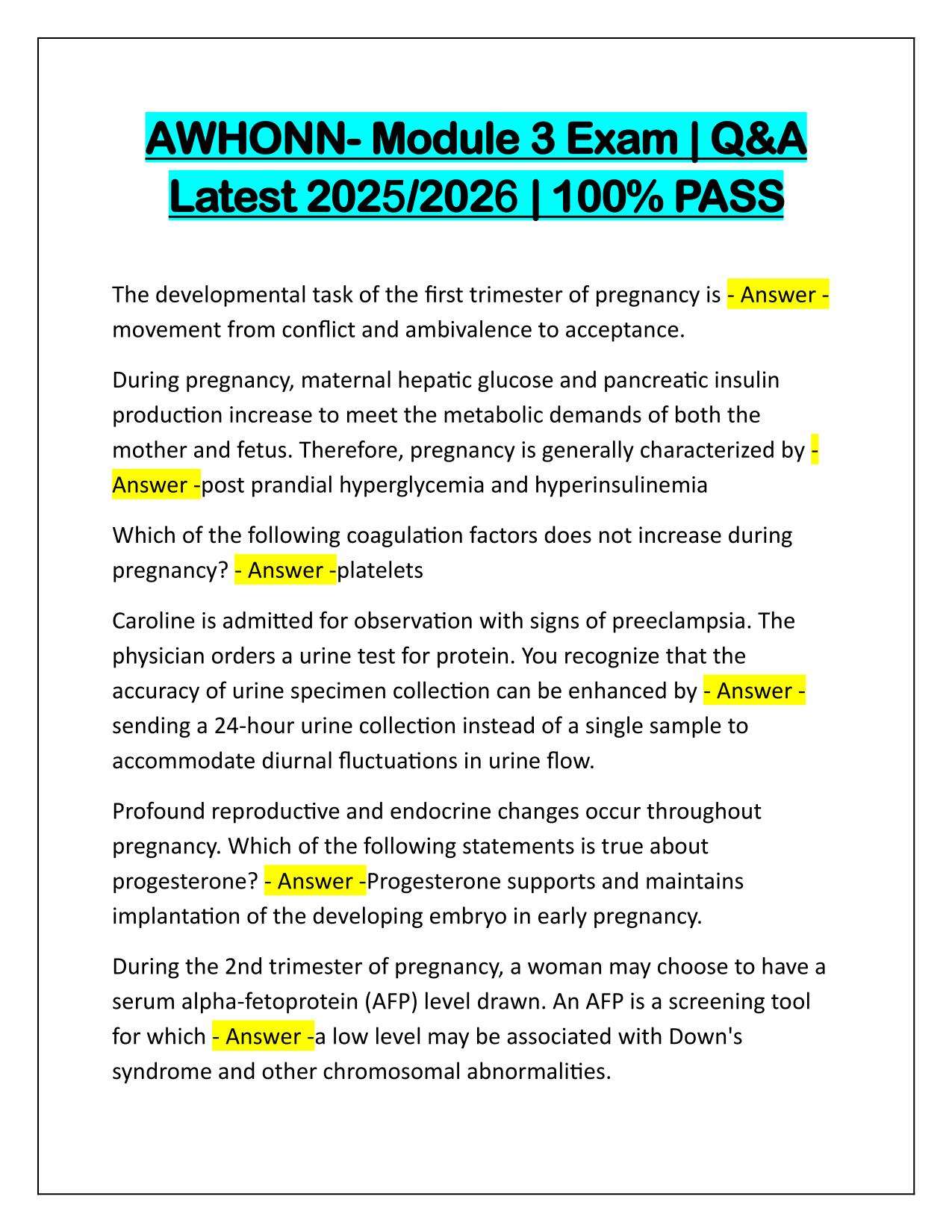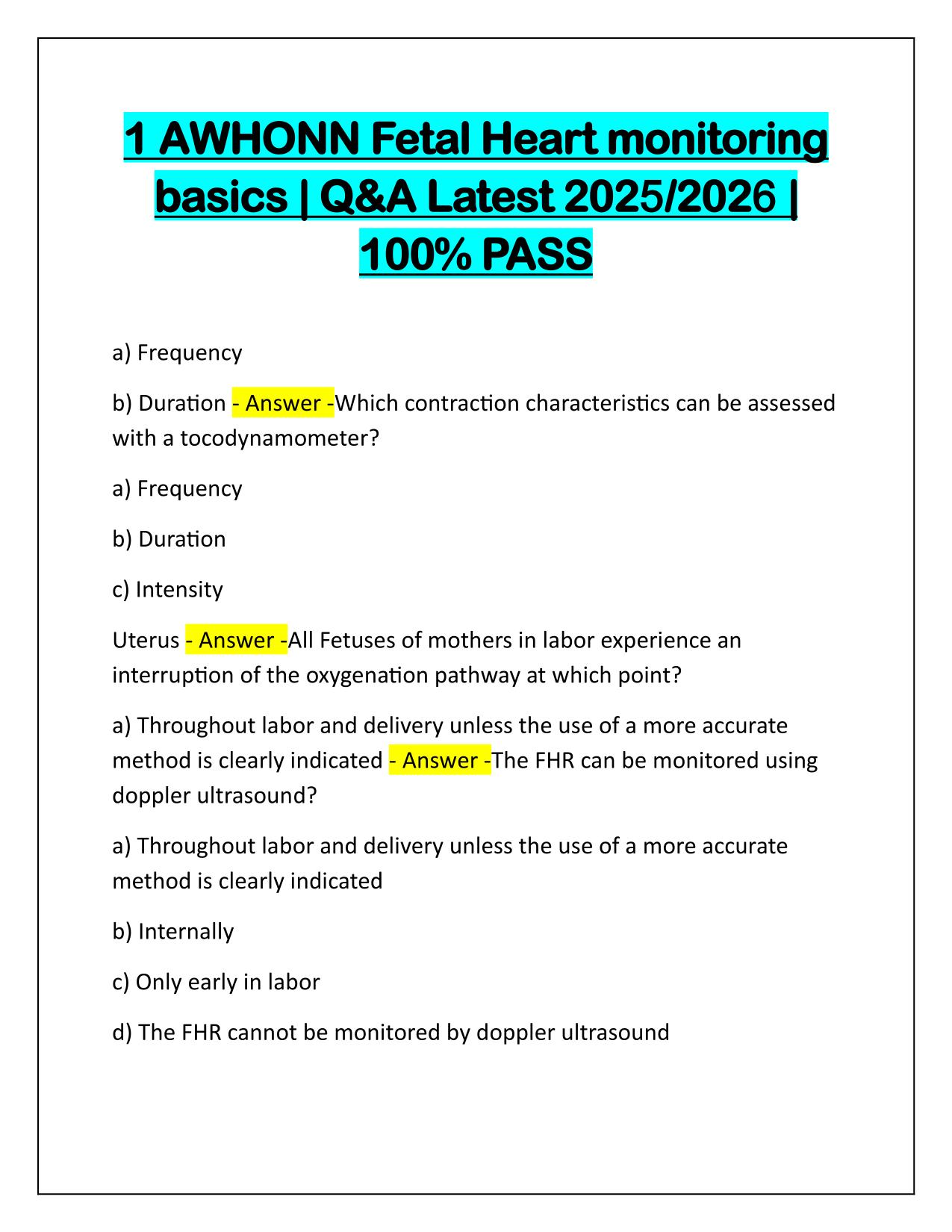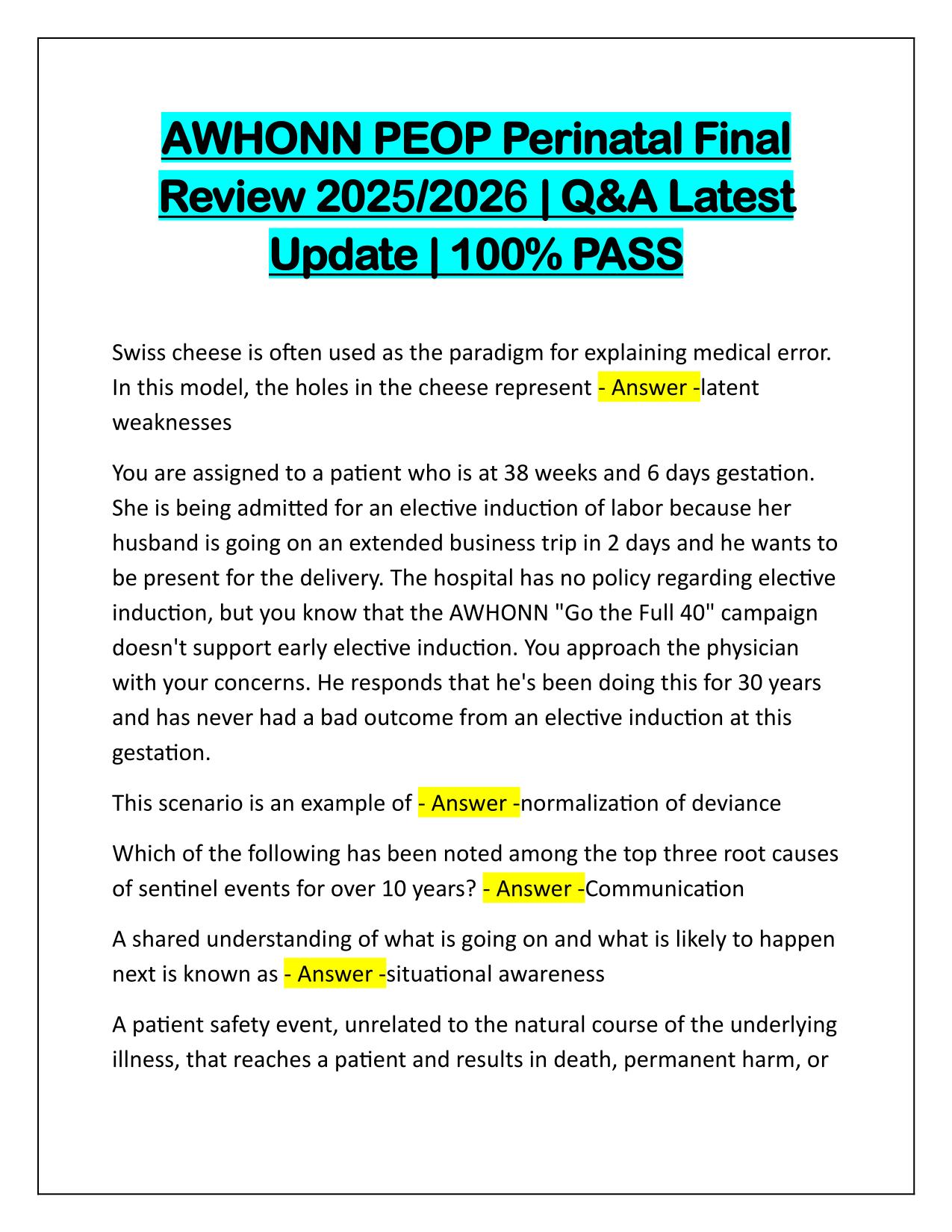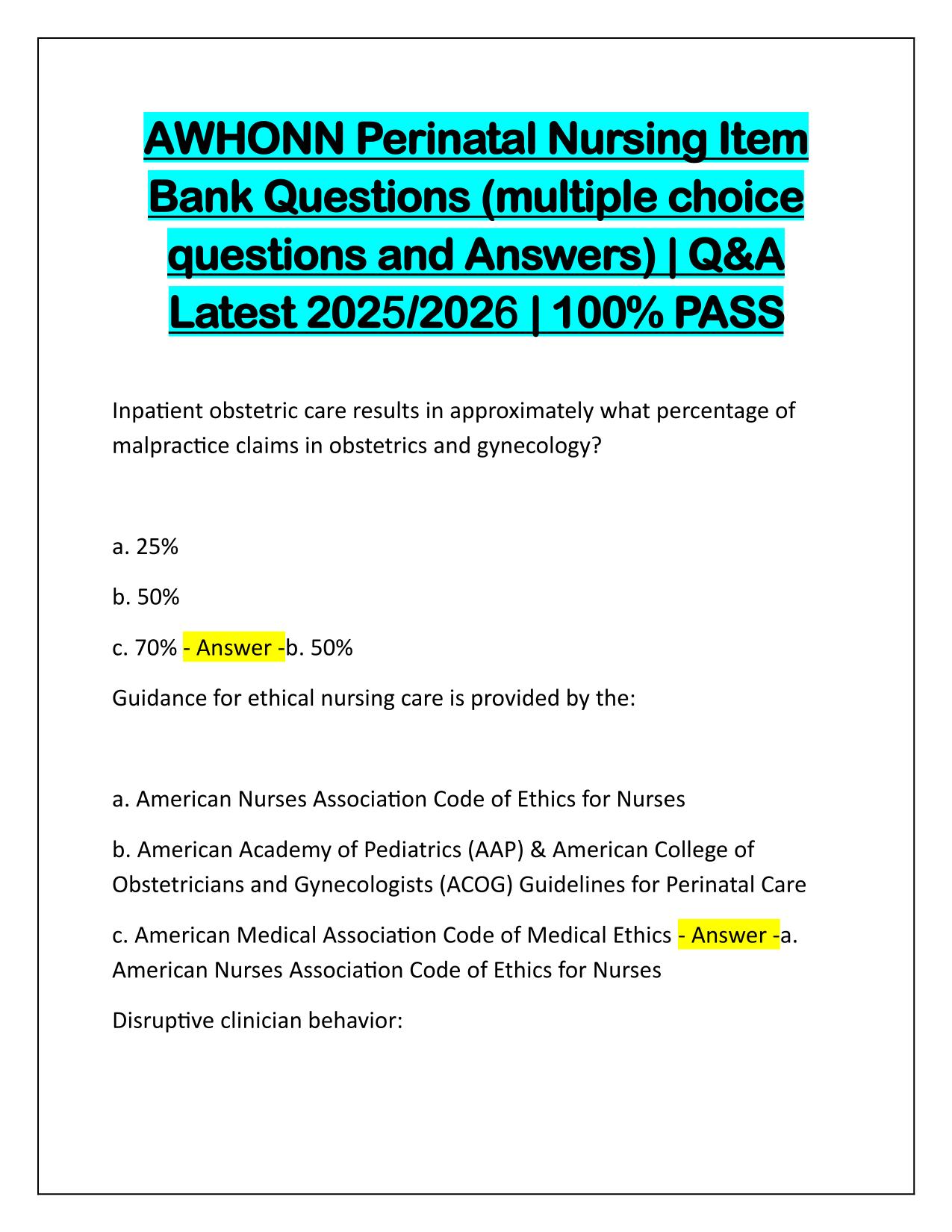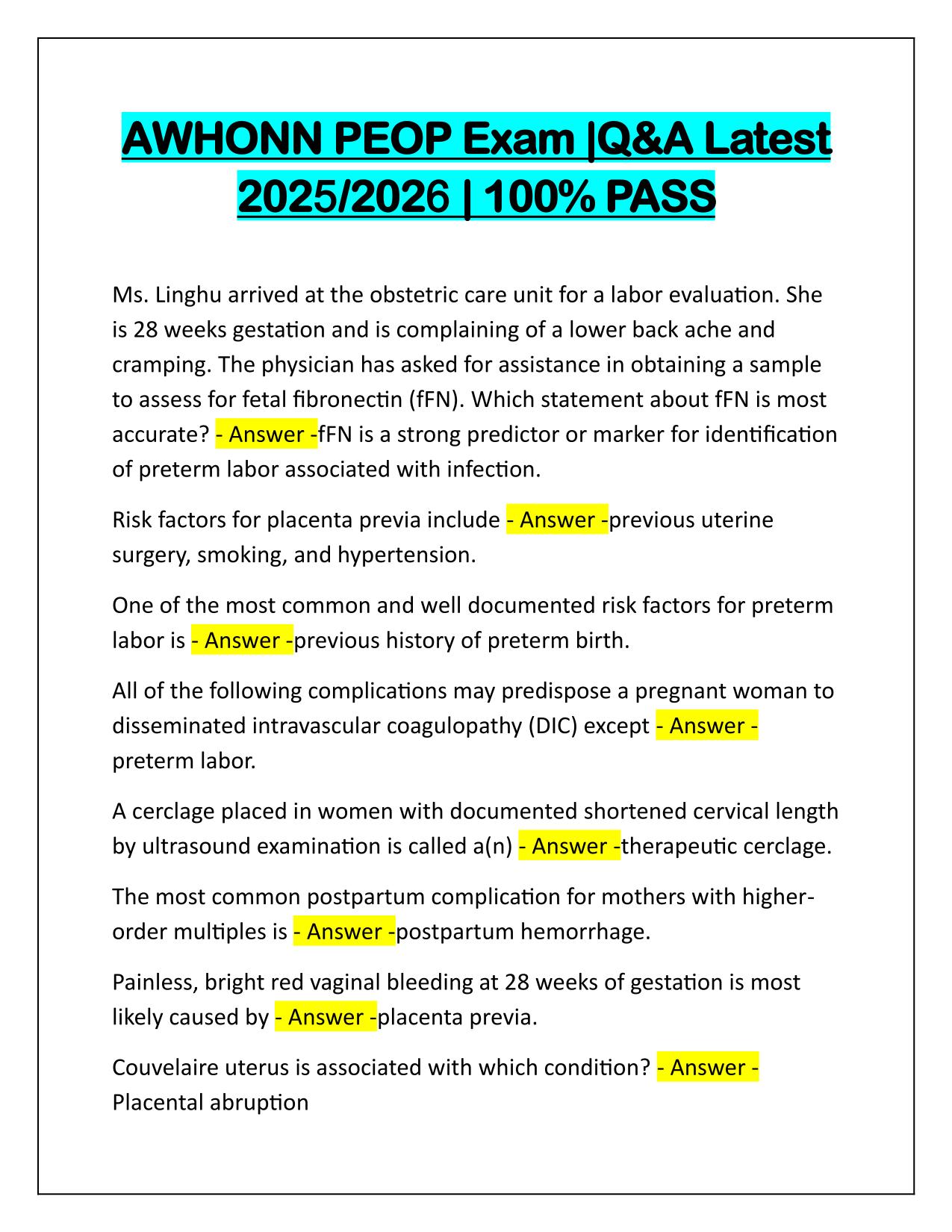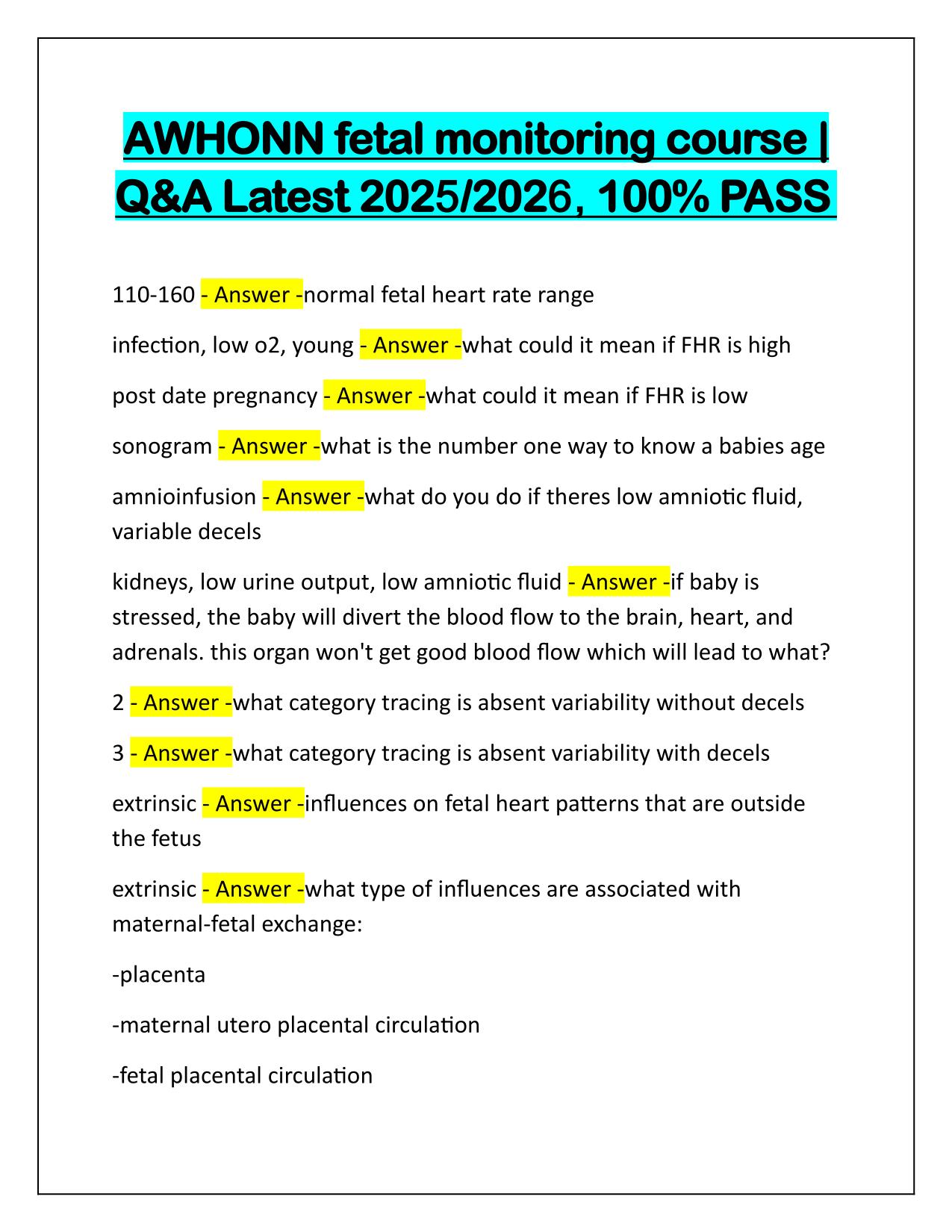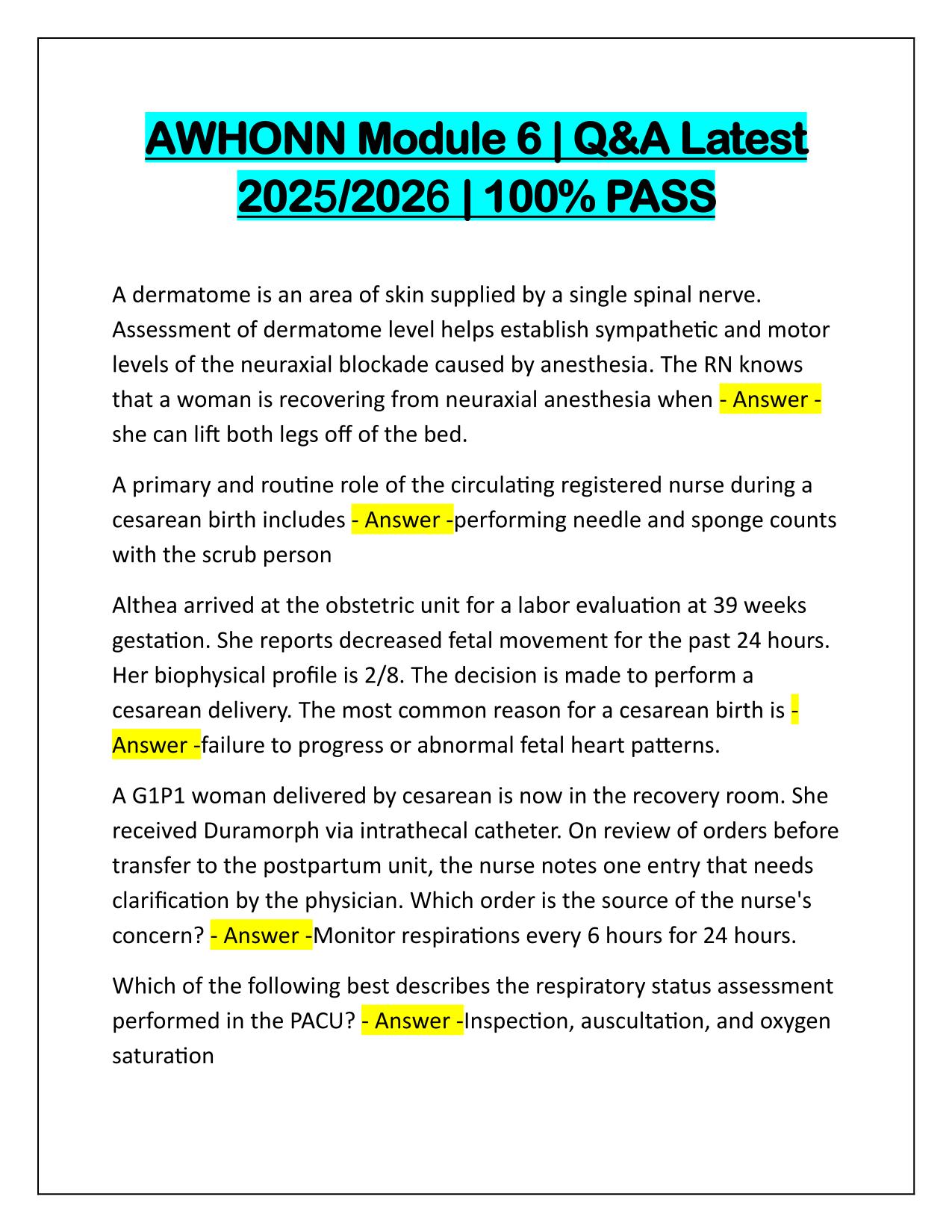AWHONN- Module 3 Exam Correctly Answered Latest Update 2025-2026
Course:
AWHONN
Institution:
AWHONN
AWHONN- Module 3 Exam Correctly Answered Latest Update 2025-2026
After purchase, you get:
✅ Instant PDF Download
✅ Verified answer explanations
✅ Refund if not Satisfied
✅ Prepared for 2025/2026 test cycle
Document Information
| Uploaded on: | April 30, 2025 |
| Last updated: | May 12, 2025 |
| Number of pages: | 4 |
| Written in: | 2025/2026 |
| Type: | Exam (elaborations) |
| Contains: | Questions & Answers |
| Tags: | AWHONN- Module 3 Exam Correctly Answered Latest Update 2025-2026 |
Seller Information

AdelineJean
User Reviews (0)
Exam (Elaborations)
$7.00
Bundle Deal! Get all 10 docs for just $23.50
Add to Cart
100% satisfaction guarantee
Refund Upon dissatisfaction
Immediately available after purchase
Available in Both online and PDF
$7.00
| 0 sold
Discover More resources
Available in a Bundle
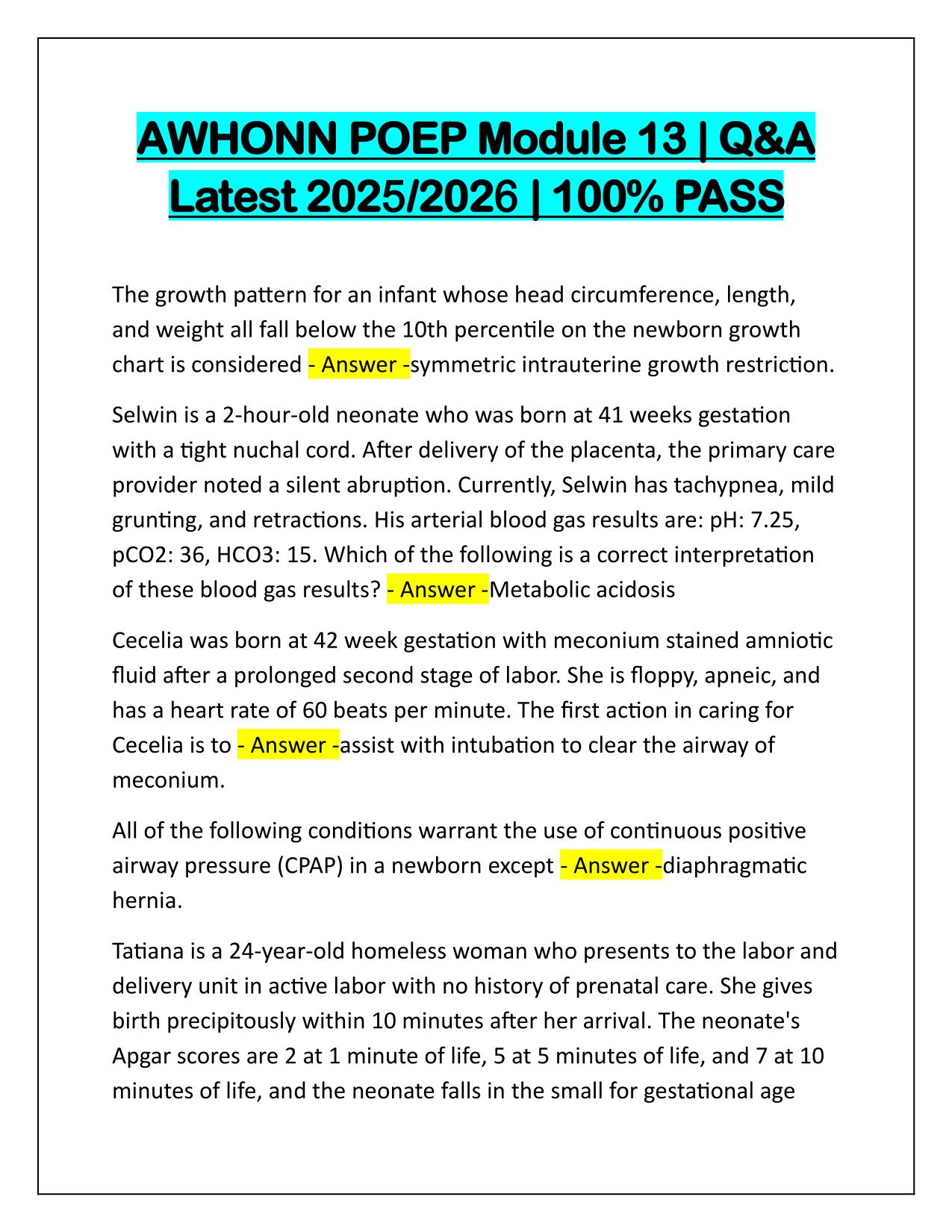
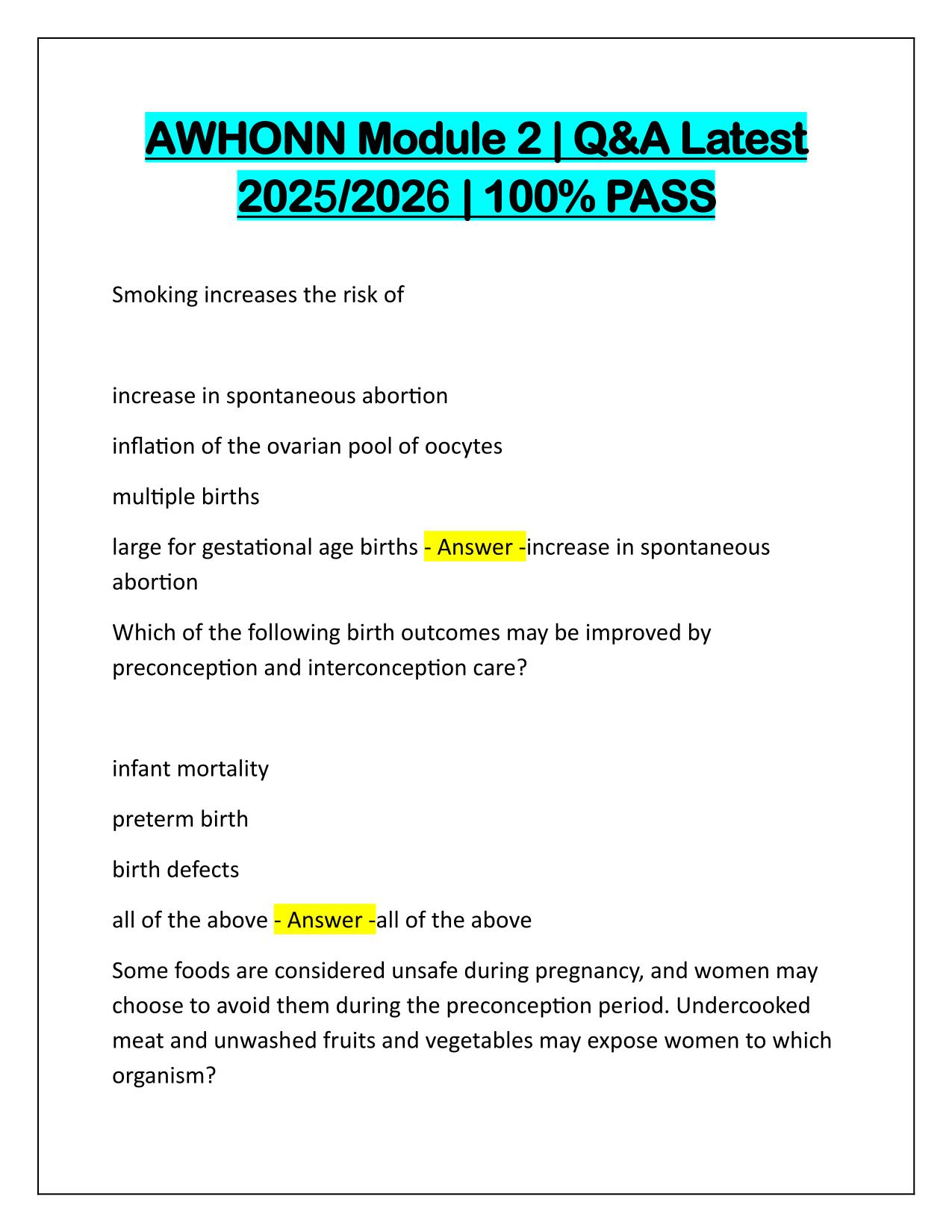
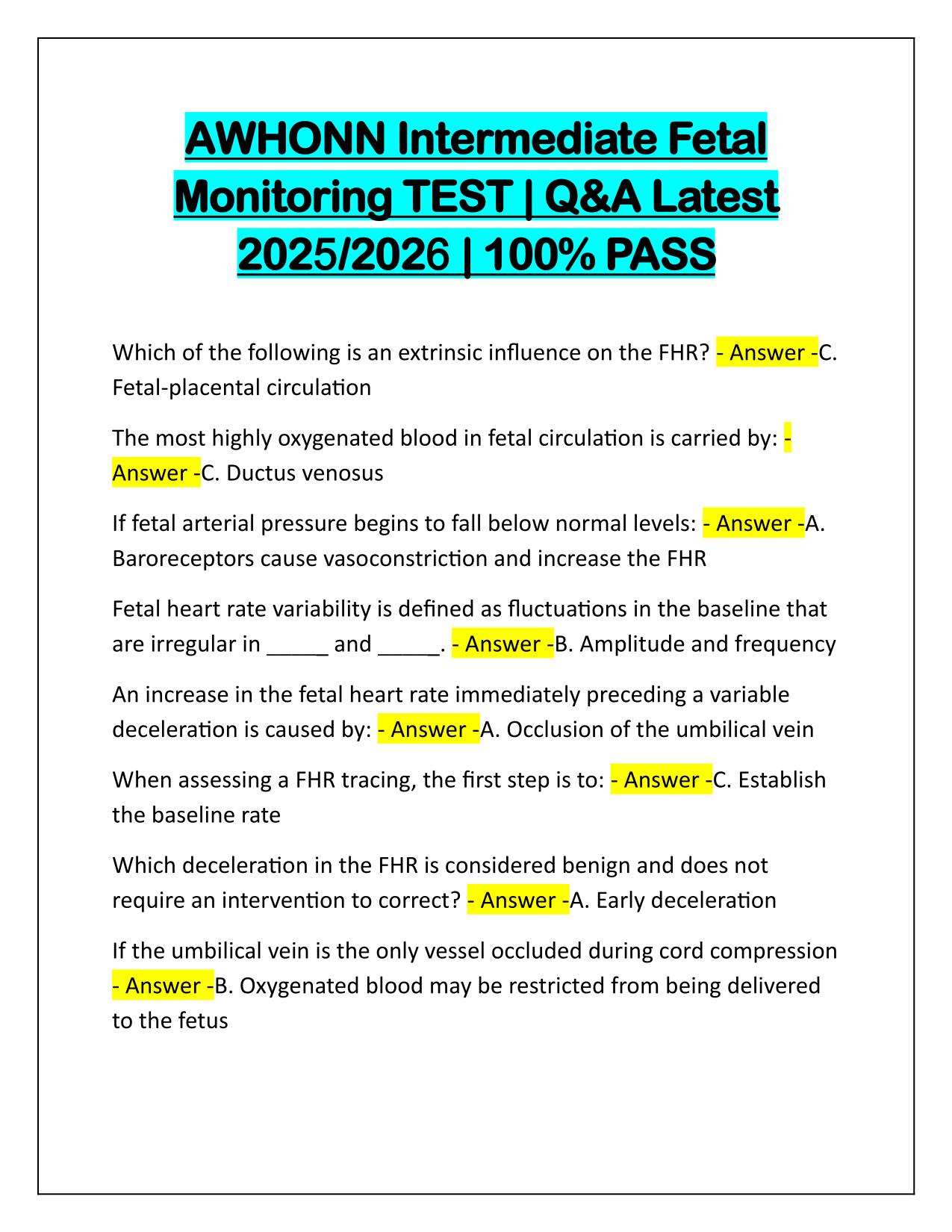
Bundle for AWHONN PEOP, Perinatal Nursing Q&A Latest Update 2025-2026 Update
Includes 10 Documents
$23.50
Content Preview
AWHONN- Module 3 Exam | Q&A Latest 2025/2026 | 100% PASS The developmental task of the first trimester of pregnancy is - Answer movement from conflict and ambivalence to acceptance. During pregnancy, maternal hepatic glucose and pancreatic insulin production increase to meet the metabolic demands of both the mother and fetus. Therefore, pregnancy is generally characterized by Answer -post prandial hyperglycemia and hyperinsulinemia Which of the following coagulation factors does not increase during pregnancy? - Answer -platelets Caroline is admitted for observation with signs of preeclampsia. The physician orders a urine test for protein. You recognize that the accuracy of urine specimen collection can be enhanced by - Answer sending a 24-hour urine collection instead of a single sample to accommodate diurnal fluctuations in urine flow. Profound reproductive and endocrine changes occur throughout pregnancy. Which of the following statements is true about progesterone? - Answer -Progesterone supports and maintains implantation of the developing embryo in early pregnancy. During the 2nd trimester of pregnancy, a woman may choose to have a serum alpha-fetoprotein (AFP) level drawn. An AFP is a screening tool for which - Answer -a low level may be associated with Down's syndrome and other chromosomal abnormalities.
